#pamela lyndon travers
Explore tagged Tumblr posts
Text
GOOD MORNING!
Happy Monday!
Wrote about PL Travers on my blog
Check it out! Or don't. I can't tell you what to do.
3 notes
·
View notes
Text

Home of P. L. Travers on 50 Smith Street in Chelsea, London, England
0 notes
Text

Watching a documentary on ABC tonight and this is the biggest thing I’ve taken away from it
#there’s actually a lot interesting in this documentary#I mean of course it has a sympathetic view on Walt’s ‘not taking no for an answer’#but man it just sounded like P.L. Travers just wanted to be left alone#rightfully so of course lol#Mary Poppins was my favorite film as a kid and I still fully enjoy it to this day#but like damn! my girl Pamela Lyndon Travers just can’t catch a break!#my words
1 note
·
View note
Text
Thursday 19th December 2024
Seventeen Seventy to Hervey Bay
At sunrise, it seemed unlikely that we would see much of it today. The skies were leaden and overcast, and although the temperatures at 6am were 23 degrees, with a strong breeze off the Pacific, it felt 10 degrees less than that. The tide was just coming in, and there was little movement of small boats as there were on previous days.
Our destination today was 250 km away at Hervey Bay, which is the departure town for Fraser Island, or K'gari, as is the preference now. We wanted to visit this island, and so a convenient stepping off place was necessary. As we drove, the day's weather gradually improved, and with the sun out, temperatures reached into the mid thirties. We chose a route that would take us firstly to Bundaberg. Now we were just a little put off this place, for all the wrong reasons. A little while ago, we were buying a six-pack of beer in a grog shop and were blinded by the array of options. Next to a pack of Great Northern Brewery output was a pack of Bundaberg. The bright yellow cans looked appealing and just a bit different. Different they certainly were, because as soon as the ring was pulled and a small draught decanted, we thought we had stout in the glass, not an IPA! Worse was to come because the taste test proved we had rum and coke, and not particularly nice rum and coke at that! Well, I persevered, and I still have one can of the stuff left that in Martine's clear opinion should be in the bin. So when it was clear we were to drive through the place that produced this horrible liquid, we figured we should just keep going, although as a town, it was actually quite presentable. Very close to Bundaberg, by the sea, was what sounded a nice little place to stop for a coffee; Burnett Heads, and after all, it was only 5 miles up the road. It wasn't long before we could see this was a big mistake. The countryside was flat, uninteresting, windy, and like being on the fens on a bad day. Coupled with a complete lack of cafés. Even the marina yielded no such supping places. We had to settle for a very odd bakery, where a young girl who looked like she ought to be in school, said in a rather assertive, authoritative manner when she had taken the order for 2 coffees, "I need you to stand over there" and pointing! I complied immediately, of course. What do they teach them in school these days? The rest of the intake of customers looked extremely shifty and weird. We were so off the beaten track that I was checking to see if they had 6 fingers. A notice we read outside referred to the community as 'isolated'. The only endearing feature was the old lighthouse. Repositioned to its present spot in 1972 when an automated replacement was constructed.
Our next port of call totally restored our confidence in our ability to find an interesting and comly town. We had heard about Maryborough, of course, and were very keen to visit. Maryborough is the birthplace of Helen Lyndon Goff, better known as PL Travers, author of Mary Poppins. Her full pseudonym, chosen as her stage name, was Pamela Lyndon Travers. Travers was her father's name, and Pamela ensured a good cadence. The museum set up to house memorabilia and tell the story is in the old Bank building that, in an upstairs room in 1899, she was actually born, while her father worked as bank manager downstairs in what was the Australian Stock Bank. This was a charming exhibition of her upbringing, background, and her works. She moved to England in 1923 at the age of 24, which is where she lived most of her life, dying in Chelsea in 1996. Her father had a problem with alcohol, his work suffered, and after demotion to clerk, and a few bank moves to poorer locations, eventually he caught pneumonia and died 3 days later. The family was then destitute, and Helen had to move in with a wealthy aunt. Tough time. It might, therefore be conjecture, but is it perhaps possible to see a bit of background to the plot for the Banks', later in the story? Perhaps. Interestingly, Travers' chosen illustrator for her books was Mary Shepard, who was the daughter of EH Shepard, the illustrator of Winnie the Pooh and Wind in the Willows!
Driving out through Maryborough, we were delighted with the place. Charming stone built buildings in the colonial style, old Hotel/ Bars on street corners, and possibly the nicest tribute to the work of the town's most successful daughter, the pedestrian lights show a red and a green Mary Poppins complete with umbrella.
Our place for the next 4 nights is in a house called The Little Green Cottage. 100 metres from the beach, it will be ideal for us before flying back to Sydney.










3 notes
·
View notes
Text


On this day in 1964, Walt Disney’s movie adaptation of Pamela Lyndon Travers’ book Mary Poppins. Although a praised classic among many, this movie was almost not made at all. Travers was extremely hesitant to give Disney the rights to make the movie, as she feared he would make a mockery of her books. However, she eventually came around on the grounds that she would have script approval power. The film stared Julie Andrews (Mary Poppins) and Dick Van Dyke (Bert) with music written by Robert and Richard Sherman. The songs became a hit with adults and kids alike and even Disney himself! His favorite song was “Feed the Birds” and often would request the Sherman brothers play it for him. This film also pushed boundaries in the artistic world with the scenes of animation side by side with live action actors. It also slightly dived into feminists ideas with Winnifred Banks being a strong advocate for women’s voting rights. This movie has been a favorite of mine for many years and the passion I have for it has been shared by so many others!
4 notes
·
View notes
Text
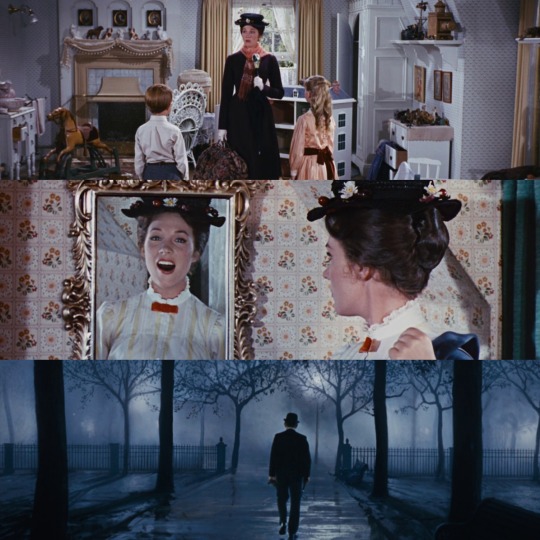
Mary Poppins (1964, Robert Stevenson)
05/02/2024
Mary Poppins is a 1964 mixed media film (live action and animation) directed by Robert Stevenson, based on the series of novels of the same name written by Pamela Lyndon Travers.
London, 1906. Bert, a man of all trades, is among other things a street orchestra man.
Doubting that his careless wife and suffragette, Winifred will be able to find an efficient nanny for the umpteenth time, George has an advert published in the Times with the requirements that a governess should have in his opinion.
A strong wind that suddenly rose sweeps away all the aspiring workers: recalled by the bizarre letter from the two little ones, which reached her through the fireplace, the "supernanny" Mary Poppins, practically perfect in every respect, comes down from the sky with an umbrella.
A pyrotechnic attack by Admiral Boom, who mistakes the chimney sweeps for Hottentots, forces the group to continue the celebration in the living room of the Banks house, involving Winifred and the maids in the dancing.
The protagonist of the film is Mary Poppins - a magical nanny who arrives at number 17 of Cherry Tree Lane flying down from the sky during a day with the wind blowing from the East, attached to a black umbrella with a handle in the shape of a talking parrot's head - who takes care of the siblings Jane and Michael Banks in the family's most difficult moment.
When George Banks is fired, instead of being destroyed, he is cheerful and sings with his family; while her mother, Winnifred Banks, is a full-time suffragette, who participated in many demonstrations on women's emancipation.
In 1934, P. L. Travers, pseudonym of the Australian Helen Lyndon Goff, published the novel Mary Poppins, which tells the story of the magical flying nanny who comes down from the sky to help the Banks family. The sequel was published in 1935, followed by six more novels, published until 1988.
According to the story told in Saving Mr. Banks and the special features of the 2004 special edition DVD, Walt Disney's daughter Diane fell in love with the books of the series and made her father promise to produce a film based on her beloved books. The Sherman brothers composed the soundtrack and helped write the script, suggesting moving the events from the 1930s to the Edwardian era.
Many parts of the correspondence between Disney and Travers are part of the collection in the Library of New South Wales, Australia.
Their relationship during the production of Mary Poppins is told in a dramatic version in the film Saving Mr. Banks, produced by Walt Disney Pictures in 2013.
The film was shot entirely at the Walt Disney Studios in Burbank, California. Some hand-made drawings of the discarded scenarios were used for the overture of the film's sequel.
The penguins who serve tea to Mary Poppins and Bert were voiced, in the original version, by James MacDonald, who also took care of the sound effects of the film.
David Tomlinson acted with a fake mustache at Walt Disney's request.
The other actresses considered for the part of Mary Poppins were Bette Davis and Angela Lansbury.
#mary poppins#film#Live action animated film#live action#animation#1964#robert stevenson#P. L. Travers#london#1906#one man band#suffragette#the times#Khoekhoe#1934#1988#saving mr banks#walt disney#sherman brothers#edwardian era#new south wales#australia#walt disney pictures#walt disney studios#Burbank California#california#mary poppins returns#Jimmy MacDonald#david tomlinson#bette davis
3 notes
·
View notes
Text

basic information: pamela travers

info under the cut

NAME. pamela lyndon travers AGE. appears to be 24, is actually 91 GENDER. female ALIASES. p.l. , mary poppins AFFILIATIONS. former coven, unaffiliated ABILITY. none the great exception ➢ an "ability" that seemingly allows pamela to do a seemingly endless assortment of parlor magic tricks ( flying with an umbrella, teleporting to wherever she thinks of, giving life to inanimate objects, bottomless carpet bag, etc. ) ➢ while she claims her magic to just be an ability, pamela's magic is genuinely real magic ( similar to how lovecraft's "ability" isn't actually an ability ) ➢ this means that pamela is capable of performing other forms of magic with enough practice and knowledge of the spell / magic used OTHER INFO. ➢ both of pamela's arms are prosthetics. she uses her magic to control them as if they were her own flesh and blood. she lost them during an attack against her old coven when she was barely an adult. ➢ as an unaffiliated witch, pamela spends her time performing odd jobs both magical and mundane in order to make ends meet. she's currently making a decent amount of money as a nanny for hire. ➢ while she has full use of her magic abilities, pamela would rather do things with her own skills instead of relying on magic. this has resulted in her becoming a jack of all trades as she has learned to be less magic dependent. she will still use magic when needed, however.
#headcanons. pamela.#*drops this and heads to bed*#i have work in 4.5 hours sksksk#its ok i only work for 5 hours so ill be fine#gn gang#ill probably change some of this tommorrow bUT THIS IS A GOOD START FOR ME
1 note
·
View note
Text
ISBN: 978-618-01-3778-1 Συγγραφέας: Pamela Lyndon Travers Εκδότης: Ψυχογιός Σειρά: Μαίρη Πόπινς Ημ/νία έκδοσης: 14 Δεκ 2020 Σελίδες: 192 Μεταφραστής: ΠΙΠΙΝΗ ΑΡΓΥΡΩ Εικονογράφος: Child Lauren Σχήμα: 19 x 24.5 cm Βάρος: 0.780 kgr Βιβλιοδεσία: ΣΚΛΗΡΟΔΕΤΟ
0 notes
Text
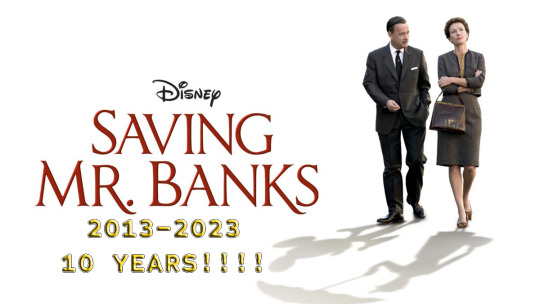
It's been 10 years passed since Disney's Saving Mr. Banks came out in December-13-2013 and let me tell ya: it was pretty good and it's based on the true story of both Pamela Lyndon Travers and Walt Disney's long process in making Mary Poppins 1964 movie. Emma Thompson is portrayed as Pamela Lyndon Travers and Tom Hanks is portrayed as Walt Disney in the movie version.
#10years#disney#savingmrbanks#truestory#pamelalyndontravers#waltdisney#marypoppins#emmathompson#tomhanks#movie
0 notes
Photo

Rob Marshall, Mary Poppins Returns, 2018 VS Chris Burden, Urban Light, Los Angeles County Museum of Art (LACMA), Los Angeles | USA, 2008
#rob marshall#mary poppins#mary poppins returns#Pamela Lyndon Travers#p. l. travers#Emily Blunt#Dick Van Dyke#Lin-Manuel Miranda#Ben Whishaw#Emily Mortimer#lacma#los angeles#urban light#USA#california#Los Angeles County Museum of Art#light#light art#contemporary art
76 notes
·
View notes
Text
Here is a little piece form the first ever Mary Poppins story P. L. Travers ever published. Story from 1926 ☂️

❤❤❤
They were supposed to be in love....my shipper heart 😫❤.
(klick for better quality.)
#mary poppins returns#mary poppins#mary and bert#herbert alfred#pamela lyndon travers#i wanna cry#they are so in love#cuties
59 notes
·
View notes
Text

Pamela L. Travers // Mary Poppins Comes Back
#books#book aesthetic#bookblr#book quotes#stars#stars aesthetic#dark academia#dark academic#dark academia aesthetic#mary poppins#mary poppins comes back#pamela lyndon travers#p l travers#da aesthetic#light academia#light academia aesthetic#empowering#empowering quotes#motivating quotes#quotes#outer space#magic academia
54 notes
·
View notes
Text
“Vento dall'est, la nebbia è là, qualcosa di strano tra poco accadrà. Troppo difficile capire cos'è, ma penso che un ospite arrivi per me.”

“Saving Mr. Banks”
#Saving Mr. Banks#frase#frase film#mary Poppins#P. L. Travers#Annie Rose Buckley#Pamela Lyndon Travers#Helen Lyndon Goff#emma thompson
2 notes
·
View notes
Photo
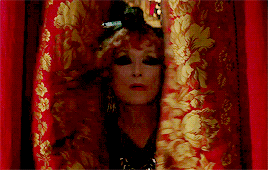


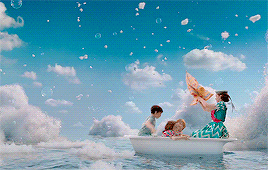
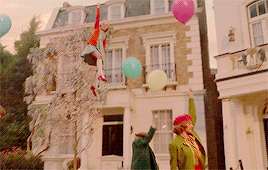
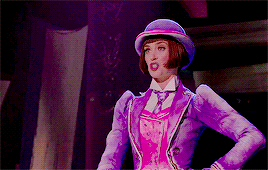
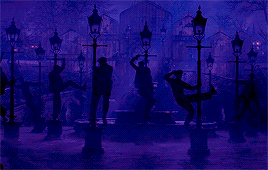

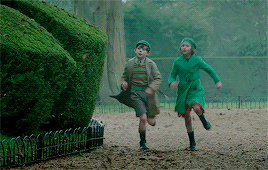
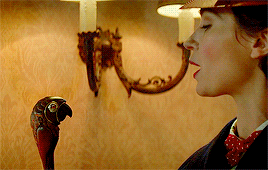
Mary Poppins Returns (UK - USA, 2018)
#Mary Poppins Returns#Mary Poppins#Disney#disneyedit#Emily Blunt#Lin-Manuel Miranda#Meryl Streep#Pixie Davies#Nathanael Saleh#Joel Dawson#Emily Mortimer#Rob Marshall#Pamela Lyndon Travers#my gifs#movie gifs
460 notes
·
View notes
Text
Mary Poppins, Pamela Lyndon Travers
SUPERCALIFRAGILISTIKEXPIALIDOUCIOUS à vous ! Mary Poppins, ce sont pour moi l’élégance piquante de Julie Andrews et les aventures merveilleuses que vivent en dessin animé les jeunes Jane et Michael Banks dans le film de 1965. Et puis c’est « ce mot trop long et parfaitement atroce » que l’on n’a pas moins envie de s’acharner à apprendre par coeur sitôt le film fini !
Après avoir vu Dans l’ombre de Mary (Saving Mr Banks), le film de 2013 qui raconte l’histoire de la collaboration pas toujours simple entre Walt Disney et Pamela L. Travers pour l’adaptation du livre. En creusant un peu la question de la véracité du film, on tombe sur plusieurs articles qui expliquent que l’histoire est plus sombre que ça. Le film raconte l’histoire en dorant la légende de Disney, omettant bien de nombreux aspects de la vie de Pamela L. Travers ; et en créant un « happy ending » loin de la réalité.
SPOILER : le film Dans l’ombre de Mary présente l’autrice pleurant, apparemment de soulagement, lors de la première du film. Or si Pamela L. Travers a effectivement pleuré lors de la première, c’est plutôt sous le choc de la déception. Elle écrira plus tard : « Tout était si déformé que des larmes coulaient sur mes joues… Le choc était si grand que je sentais que jamais plus je n’écrirai ni ne sourirai ! » (« Tears ran on my cheeks because it was all so distorted … I was so shocked that I felt I would never write, let alone smile, again! »). FIN DU SPOILER
Ajoutons que par là-dessus que j’ai été loin de bouder mon plaisir devant Le Retour de Mary Poppins. Il m’a paru trouver un équilibre joyeux entre rejouer l’adaptation de 1965 et écrire une séquelle. Avec des points intrigants ou des défauts, il n’en a pas moins des séquences réjouissantes qui m’ont fait l’effet de bonbons pour les yeux.
En voilà une longue introduction pour parler… du livre ! Si vous êtes comme moi, vous avez probablement plus été familier.e des films que de l’original. Alors voilà, avec toutes ces contradictions, cet amour pour le Disney des années 60 et le remake, cette tristesse de voir que l’histoire de l’adaptation a été celle d’un rapport de force où Pamela L. Travers a semble-t-il perdu des plumes… j’avais vraiment envie de découvrir son écriture à elle.
Eh bien, aucune déception.
Il y a là-dedans une fantaisie et une poésie dont on comprend qu’elles ont inspiré Walt Disney. L’histoire suit un découpage en épisodes. Chaque chapitre est une aventure improbable où les enfants sont embarqués avec leur gouvernante aussi élégante qu’irascible.
On retrouve des épisodes qui ont été adaptés presque à l’identique (les fous rires qui font flotter l’oncle Albert au plafond, Ô que j’aime cette scène !) ; d’autres réécrits pour les besoins du scénario. Et plusieurs ont été de totales découvertes. Mes préférés : La Boutique aux étoiles (les pains d’épices les plus magiques ?) ; Mademoiselle Lark et son Népomucène (où Mary Poppins parle au brave petit chien) ; et surtout John et Barbara. Ces deux là sont les deux autres enfants de la famille Banks ! Ils sont des jumeaux et on découvre que, comme tous les bébés de moins d’un an, ils ont des pouvoirs particuliers. À noter, dans le côté qui a vieilli - le chapitre de La Boussole magique qui véhicule des clichés un peu gros sur les cultures aux quatre coins du monde.
Concernant le personnage de Mary Poppins, on comprend que l’autrice ait pu avoir du mal avec l’adaptation filmique. La Mary Poppins originale paraît bien plus mystérieuse et réelle à la fois, ses angles sont plus acérés que ceux des héroïnes Disney. Elle n’est pas vraiment… sympathique; du moins, avec difficulté. Un petit côté Sherlock en mode gouvernante ? Ses marques d’affection sont non seulement rares mais même inquiétantes du point de vue des enfants (la voir gentille est signe de quelque chose de louche). Elle est d’une coquetterie plus appuyée, ne dédaignant aucun miroir. Elle boude et s’offense à tout bout de champs, surtout les jours où elle avait mis « sa jaquette bleue à boutons d’argent et le chapeau bleu qui allait avec : lorsqu’elle portait ce genre de toilette, elle se vexait toujours pour un rien. » Enfin, sa magie m’a semblé encore plus spéciale dans le livre. Et sur moi, elle opère : j’ai envie de lire les autres livres de la série (en anglais cette fois peut-être, pour le plaisir d’imaginer l’accent de cette gouvernante britannique) !
G.C.
Mary Poppins, Pamela Lyndon Travers. Traduit de l’anglais par Vladimir Volkoff. Hachette 1963 pour la traduction. Editions Livre de Poche jeunesse, 2018. Parution originale, 1934.
Pamela Lyndon Travers, de son vrai nom Helen Lyndon Goff, est née le 9 août 1899 à Maryborough en Australe, dans une famille d’origine irlandaise. EN 1924, elle s’installe en Angleterre et poursuit une carrière de journaliste, de danseuse et d’actrice de théâtre. La parution de Mary Poppins en 1934 fut son premier succès littéraire. Elle écrivit ensuite une série de cinq autres livres mettant en scène ce personnage. Pamela Lyndon Travers est morte à Londres en 1996.
#mary poppins#pamela lyndon travers#pamela l travers#jeunesse#roman jeunesse#fantasy#magique#gouvernante#angleterre#enfance#héroine#livres de femmes#chronique
1 note
·
View note
Quote
Giovanna trasalì lievemente. «È successo qualcosa!» gridò. «Questo non è il nostro aquilone. È tutto diverso!» Guardarono fissamente: era proprio vero. L’aquilone non era più verde e giallo. Aveva cambiato colore e ora era blu. Scendeva ondeggiando e ballonzolando. All’improvviso Michele gettò un grido di gioia. «Giovanna! Giovanna! Non è affatto un aquilone. Sembra... oh, sembra...» «Riavvolgi il filo, Michele, riavvolgilo, presto!» esclamò Giovanna. «Non ce la faccio ad aspettare!» Perché, ora, al di sopra degli alberi più alti, la figura all’estremità del filo era chiaramente visibile. Non c’era più traccia dell’aquilone verde e giallo, ma al suo posto si agitava una figura che sembrava a un tempo strana e nota, una figura che portava un abito blu con bottoni d’argento e un cappello di paglia guarnito di margherite. Sotto il suo braccio c’era un ombrello che aveva per manico una testa di pappagallo, una valigia scura pendeva da una mano, mentre l’altra si teneva saldamente all’estremità del filo che andava man mano accorciandosi.
P. L. Travers, Mary Poppins ritorna
8 notes
·
View notes